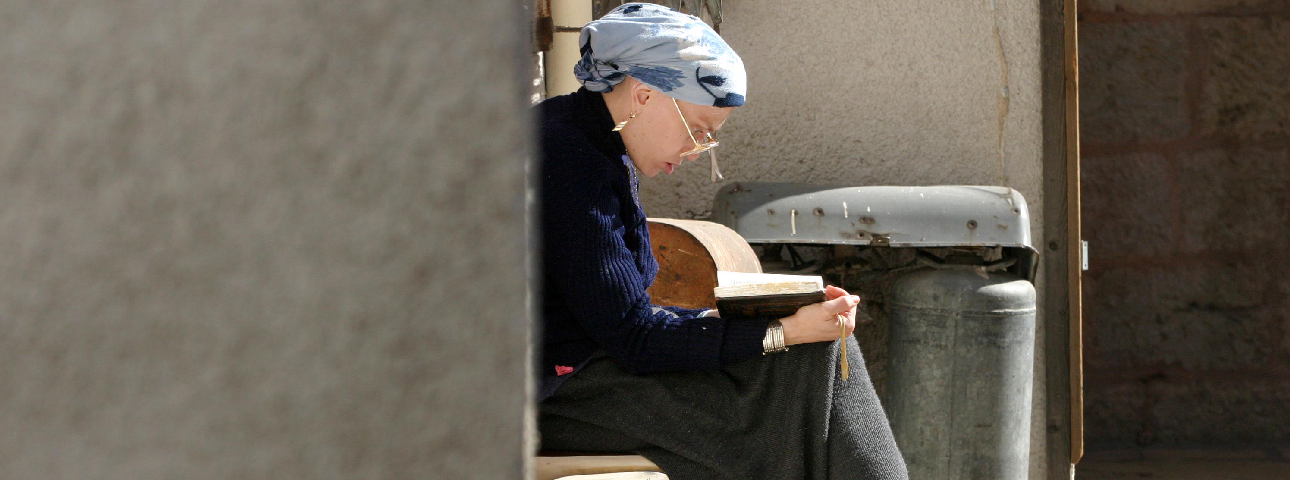Haredi women lead change
Are we witnessing a significant change in the status of women in ultra-Orthodox society?

Are we witnessing a significant change in the status of women in ultra-Orthodox society? The answer is complex. Ultra-Orthodox women have a special status within ultra-Orthodox society. They are traditionally the main breadwinners, with a large proportion of the men study in seminaries and yeshivas. The discourse on the subject of gender fills many different issues and tensions in the lives of ultra-Orthodox women: for example, the tension between preserving their unique way of life and the many changes affecting the community at home and abroad; the tension between the communal structure and the traditional role of wife and mother; and the tension between the possibilities that the modern world offers ultra-Orthodox women and the many complex challenges facing them in contrast to their characteristic strength that characterizes ultra-Orthodox women.
The position of ultra-Orthodox women in between preservation and change is reflected in the data from the past decade. The 2017 Statistical Report on Ultra-Orthodox Society in Israel of the Israel Democracy Institute and the Jerusalem Institute for Policy Studies presents two parallel trends. On the one hand, ultra-Orthodox women marry at the young age of 21 (on average), have high fertility rates of almost seven children, and while also working, they run households under difficult economic conditions with 45% of the ultra-Orthodox community living below the poverty line. On the other hand, there are various perpetuating social mechanisms; some of these are reflected in the data, such as the low number of women who have a driving license (29% in contrast to 72% of their non-ultra-Orthodox counterparts), which results in the majority of ultra-Orthodox women using public transportation to commute to work; others lack quantitative data but remain key to preserving the ultra-Orthodox social discourse and its gender-based aspects , such as shidduchim and women’s roles in the family and in the community.
However, there is currently a whole series of processes promoting change: for example, more than half of ultra-Orthodox women now take matriculations exams compared to 30% less than a decade ago; more than two-thirds (72%) of ultra-Orthodox higher education students are women; and the percentage of ultra-Orthodox women who use the internet has almost doubled. Moreover, working ultra-Orthodox women are moving away from their traditional jobs, with, most significantly, a gradual decline (from 64% to 42% between 2001 and 2005) in the number working in education. This process of change is the result of a shortage of teaching jobs, but also the result of the establishment of an alternative training program in the ultra-Orthodox seminaries for girls that includes computers, economics, graphics, and other fields of study. This plan was the result of the initiative and combined efforts of third sector organizations, the government, and the ultra-Orthodox community itself.
And this is the key to the subtle change. In the coming years, it is reasonable to expect an increase in the average salary and the access of ultra-Orthodox women to resources that until a few years ago were considered to be only for men as well as a narrowing of the gap between them and non-ultra-Orthodox women in Israel. Against this backdrop, we must examine what is the right academic platform for the advancement of ultra-Orthodox women in their quest to acquire higher education and work in high quality and meaningful jobs while also preserving their way of life. What should the state do to adapt to these changes? It must update not only government policy toward the advancement of ultra-Orthodox women in the labor market and higher education but also invest resources in relevant tools such as academic tracks and adapted employment spaces. This adaptation to changing realities through cooperation between government ministries, the business sector, the third sector, and ultra-Orthodox women themselves will benefit us all on three levels: it will increase social cohesion, reduce social gaps, and improve the Israeli economy.
First published in the Times of Israel
